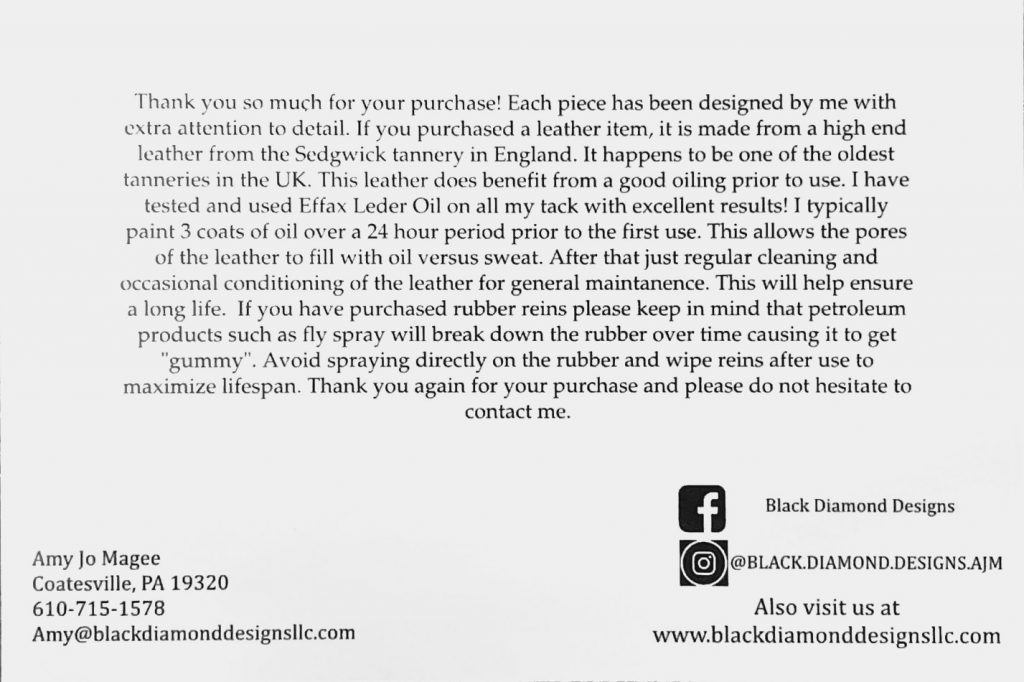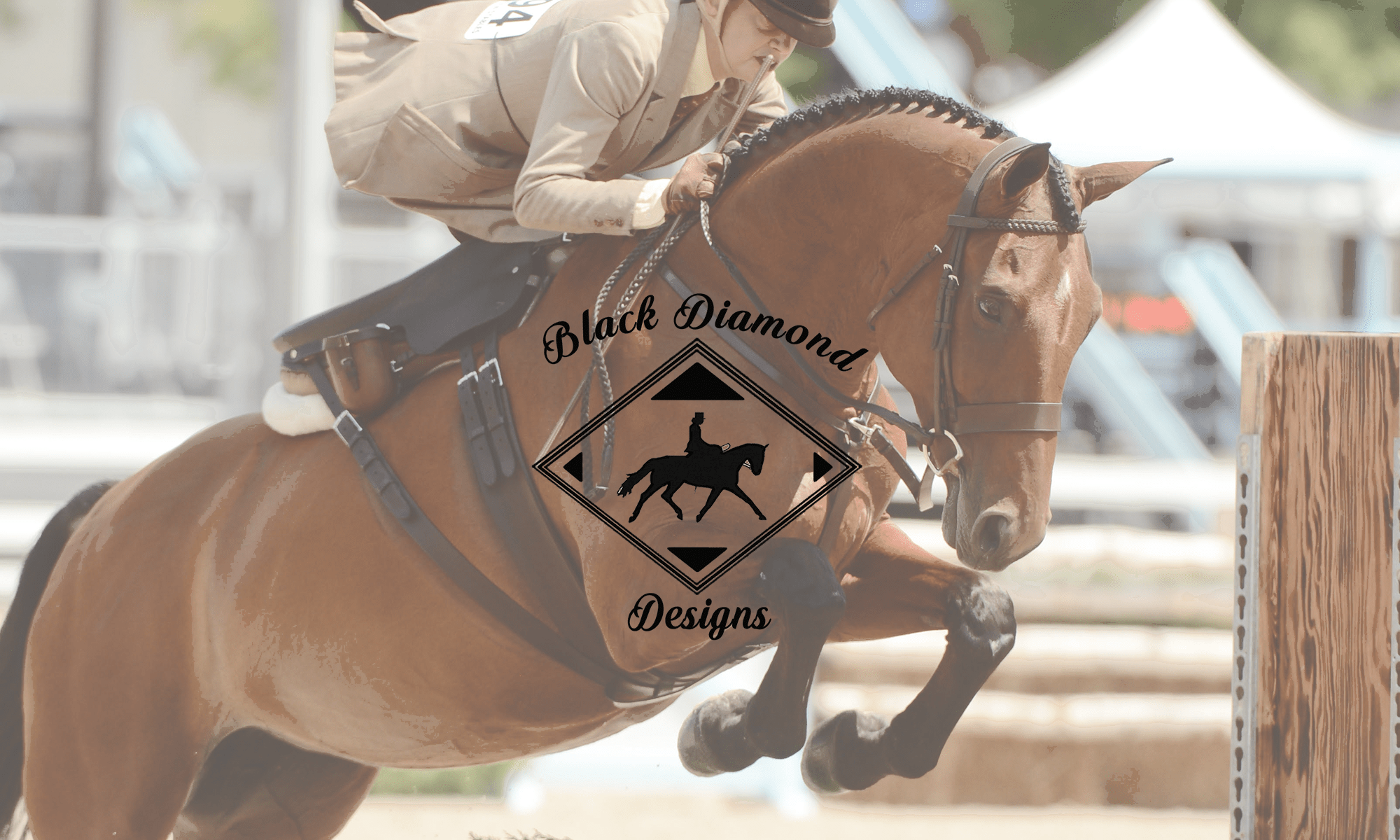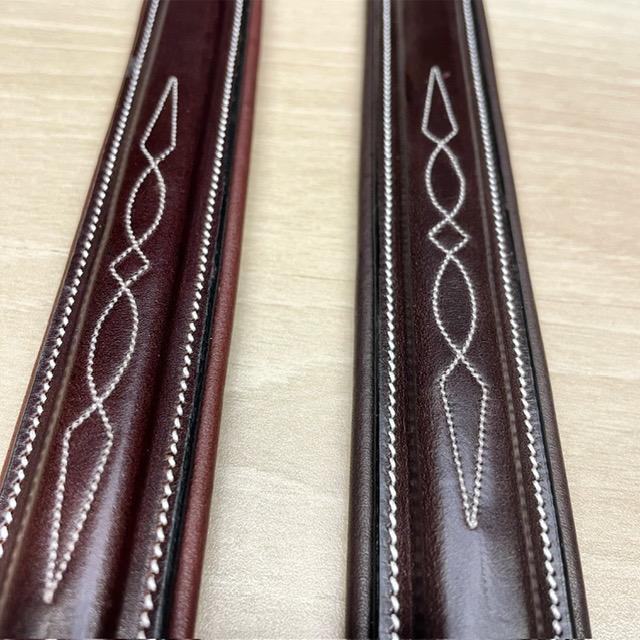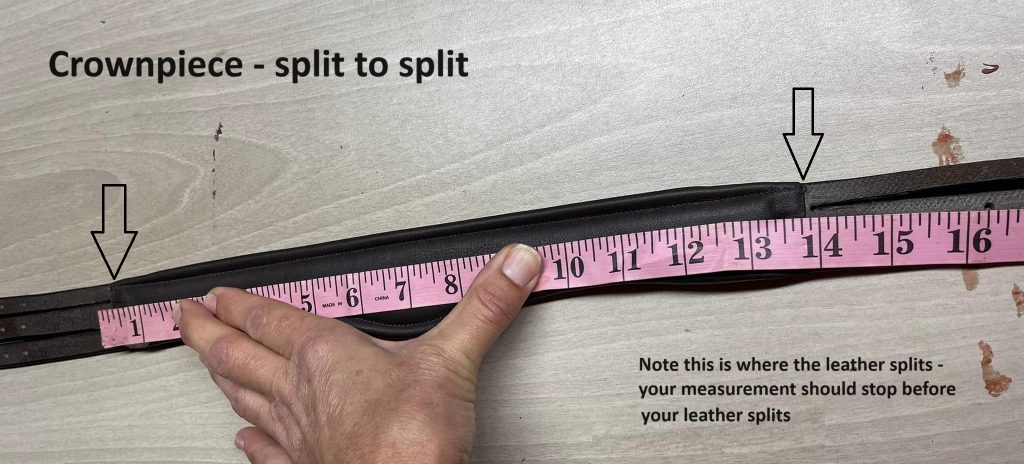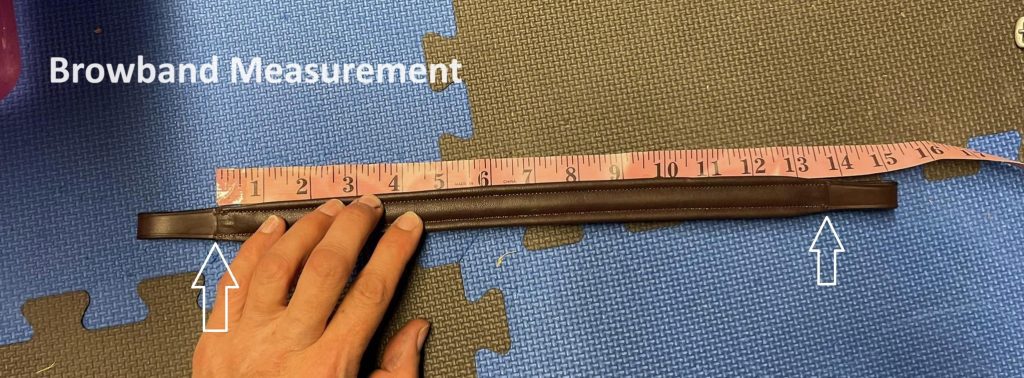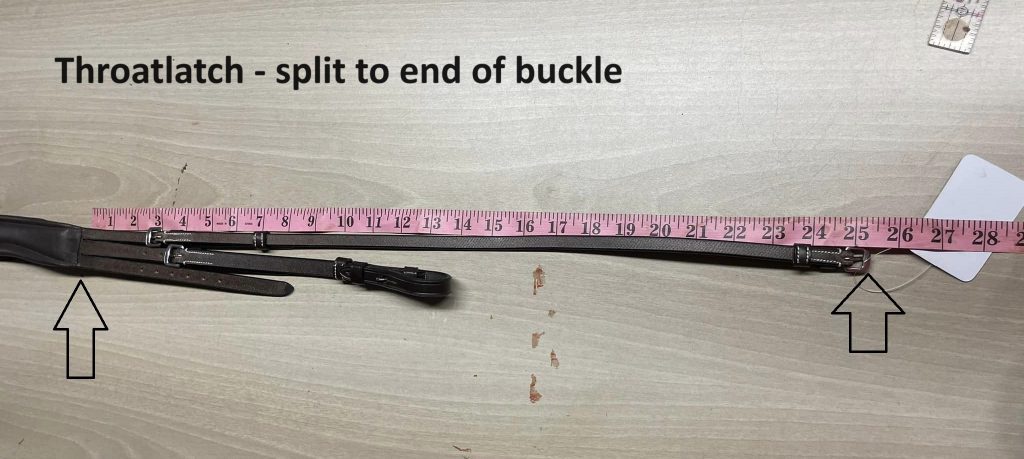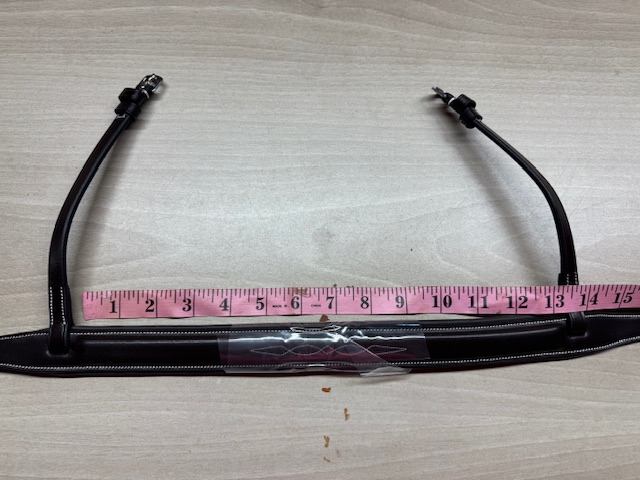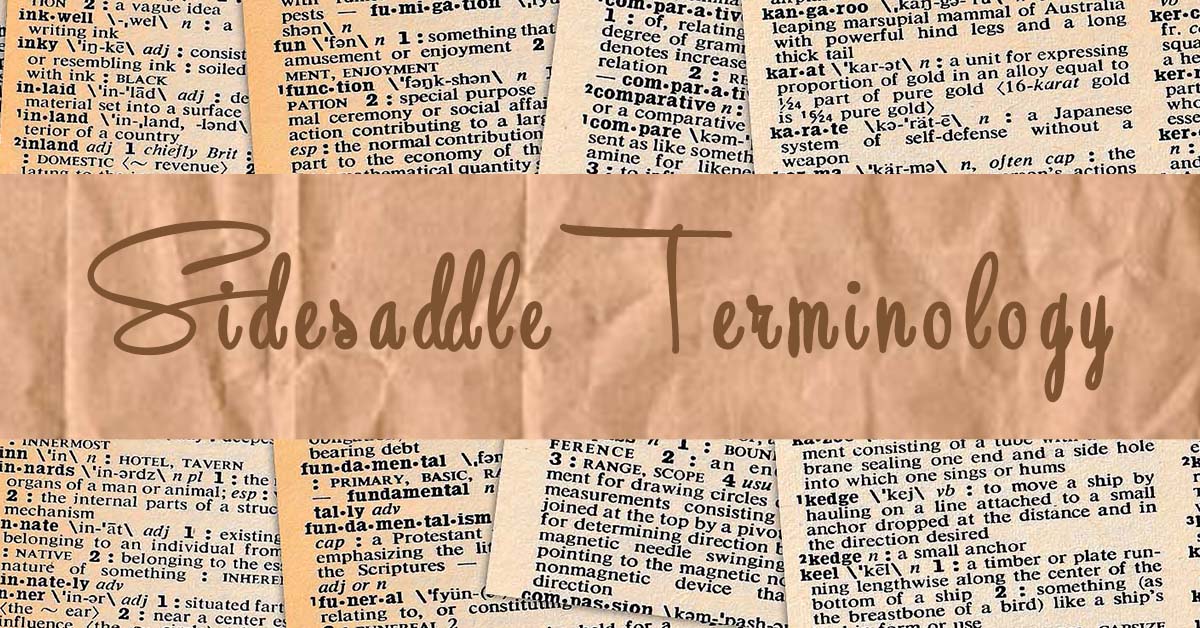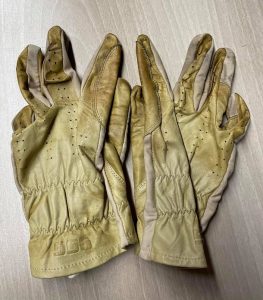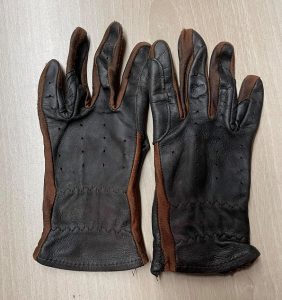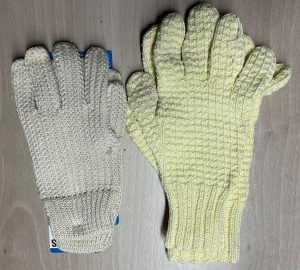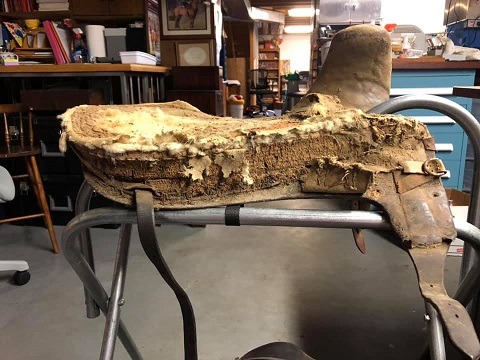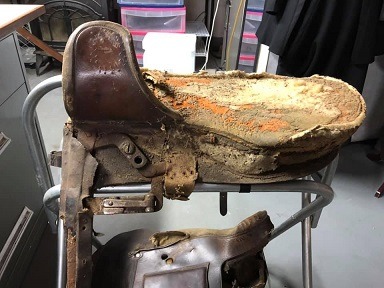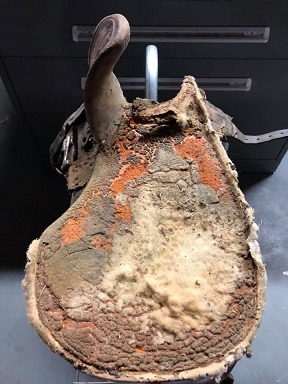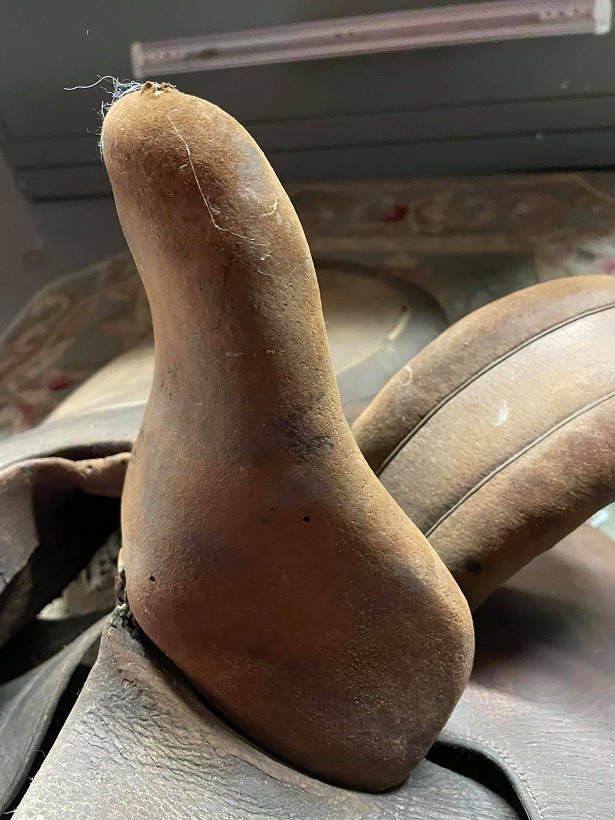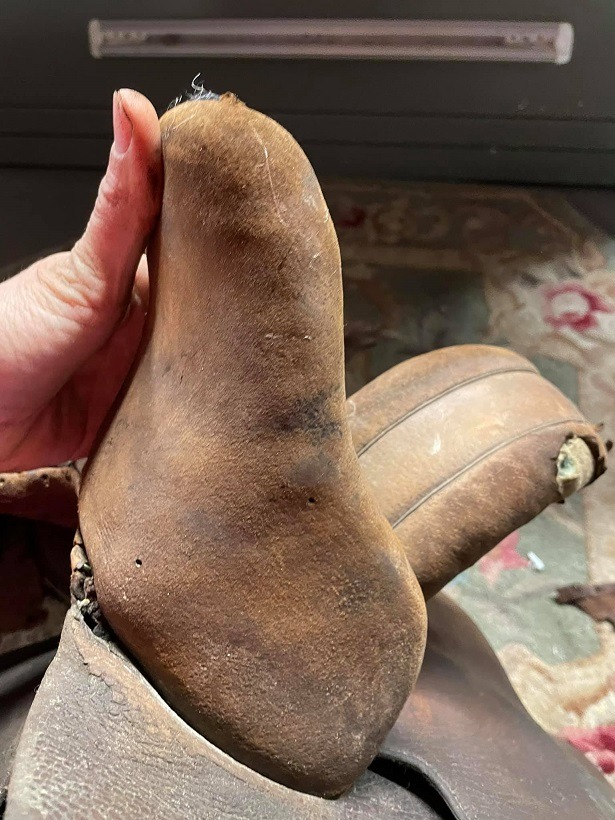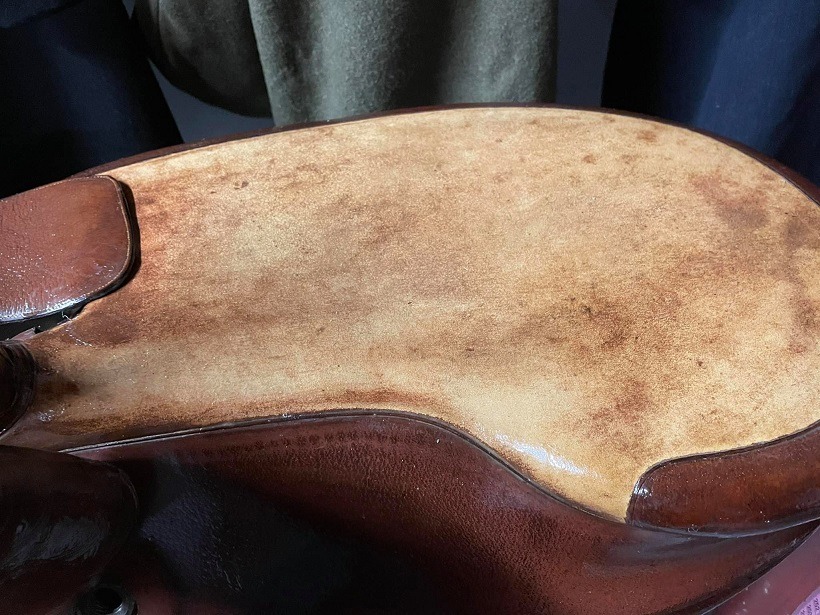This pad was patented in 1904 and apparently was rather popular when first introduced. It works really well on the wide flat-backed horses.
Unfortunately, it isn’t a great solution for the A-framed-shaped TB types we typically see here in the US. This is why it isn’t an easy answer for a saddle that is missing its panel.
These pads need to be custom-made and shaped to each horse, and while shims can be sewn to them (as seen on this pad) they aren’t able to be altered like the flock in a wool paneled saddle.
These pads did have a channel down the middle (with ventilation holes as seen in the pictures) but as you can imagine- there isn’t the spine clearance on these as you get with the wide gullets found on our modern saddles.
One nice feature was the ability for a lady to have a saddle top that fit her well, and then numerous different Wykeham pads for her different horses. These pads were relatively easy to swap out with the points of the saddle sliding into the leather pockets as seen in the pictures.
A tab that attached at the cantle and then a few other buckles for securing them together. And no you aren’t crazy- this is a Wykeham for an offside saddle.
This particular pad has had linen attached to it to give the appearance of panels. I don’t know when or exactly why this was done (I purchased it this way) but that was commonly done to give the appearance of a panel.
These Wykeham pads were also made for astride saddles, but I have only ever seen the side-saddle version.
The two pictures below are of a traditional wool panel off the saddle. I included them for comparison purposes.
Hope that information is helpful to explain when and why these may be a good or not-so-good choice for a saddle that happens to be missing its “bottom”.

